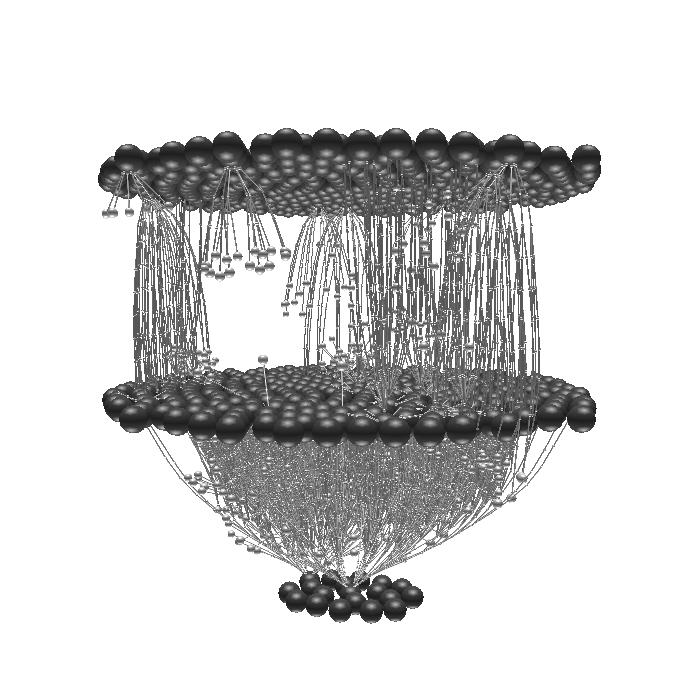
Click on the image to view the movie.
This short animation sequence illustrates how dividing cells and sprouting axons can move collectively to produce a well-formed recurrent neural architecture. The image below shows an intermediate stage in this process.

Click on the image to view the movie.
The specific target network being grown here is inspired by the architecture of the visual cortex network used in the first computational model of self-organizing cortical maps (C. von der Malsburg, Kybernetik, 14, 1973, 85-100). The network grows starting from an initial set of nine "seed" cells. After these cells and their offspring form three layers (retinal input layer at the bottom, excitatory cortical cell layer in the middle where the map forms, and inhibitory cortical cell layer at the top), axons sprout from the cells and connect the layers together in a topographic fashion. Note that the connectivity is recurrent; for example, the topmost inhibitory layer sends connections to the middle excitatory layer and vice versa. Growing axons that do not establish a connection to another cell within a reasonable period of time die off (are pruned).
Growth of this network is controlled both by "forces" acting between cells/axon tips
and by a
rule set
that dictates the execution of discrete actions such as cellular division, axonal sprouting and axonal branching.
For further details, see:
Martin, C. and Reggia, J. (2010). Self-assembly of neural networks viewed as swarm intelligence. Swarm Intelligence, 4, 1-36.